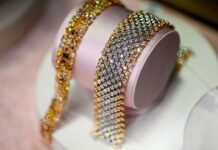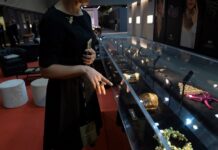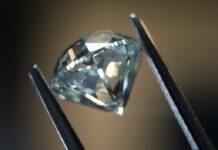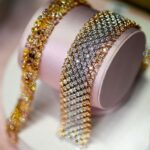Results of a new survey released by the Diamond Producers Association (DPA) and The Harris Poll revealed that majority of American consumers don’t view synthetic diamonds as “real” diamonds.
According to DPA, 68 percent of respondents said synthetic diamonds are not real because they are not “natural,” nor “from the earth,” or because they are made by man. Those who think laboratory-grown diamonds are real diamonds account for 16 percent of total respondents.
“Diamonds are billion-year-old treasures of the earth that came to us very, very slowly, which makes them uniquely meaningful in today’s on-demand world,” said DPA CEO Jean-Marc Lieberherr. “At a time when everything ‘artificial’ aims to compete with, and replace, ‘natural’ and ‘real,’ these results show consumers care about the inherent value, authenticity and symbolism that a diamond carries.”
Consumers described diamonds as “genuine,” “natural” and “authentic,” and described laboratory-grown diamonds “man-made,” “artificial” and “imitation.”
“Each natural diamond possesses a fingerprint that is tens of millions of years in the making,” said Lieberherr. “As consumers across generations have demonstrated, and this research confirms, ‘Real
Matters.’ The emotion and heritage carried by natural diamonds cannot be replicated in a factory.”
Synthetic diamonds are produced in two to three weeks in a factory environment. The differences between natural diamonds and laboratory-grown diamonds go well beyond their origin, according to DPA.
Their inclusions and growth structures carry the marks of their very different birth process, which is how they are easily recognisable using specialist equipment. Laboratory-grown diamonds and real diamonds also carry very different emotional and monetary value. Natural diamonds are inherently rare and valuable, whereas laboratory grown diamonds are produced rapidly and at scale, limiting their value and negating resale value, continued the association.
Conducted from May 3 to 7, the DPA-Harris Interactive poll surveyed a nationally representative sample of 2,000 people. This research underpins DPA’s goals of better understanding consumer knowledge and preferences and of fostering transparency within the marketplace about the differences between natural diamonds, laboratory-grown diamonds and other forms of imitation diamonds, DPA added.
News Source : jewellerynet.com
Disclaimer: This information has been collected through secondary research and TJM Media Pvt Ltd. is not responsible for any errors in the same.



























